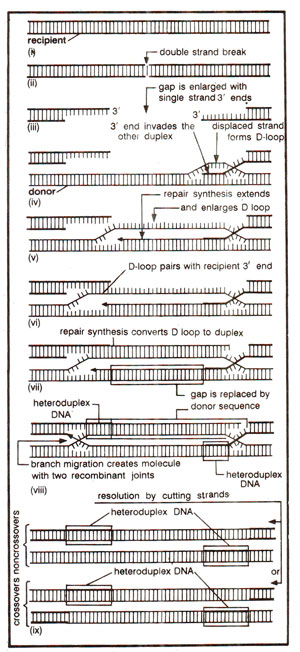Hybrid DNA models involving double strand breaks

Fig. 13.3. A hybrid DNA model for recombination, involving double strand break, followed by formation of single stranded 3' ends, only one of which migrates to a homoduplex DNA.

Fig. 13.4. A hybrid DNA model for repair of double stranded discontinuities in DNA, leading to gene conversion.

Fig. 13.3. A hybrid DNA model for recombination, involving double strand break, followed by formation of single stranded 3' ends, only one of which migrates to a homoduplex DNA.

Fig. 13.4. A hybrid DNA model for repair of double stranded discontinuities in DNA, leading to gene conversion.
The major difference between the models involving single and double strand breaks is that in the model with double strand breaks, the region between heteroduplex segments has the sequence of donor DNA in both molecules (this is why initiating DNA molecule is called recipient). Further, in double strand break model, there is initial loss of information, which is retrieved by resynthesis of DNA. In single strand break model, no such loss of information is involved. This model is consistent with events in yeast, where initiation of recombination is associated with receiving genetic information and where double-strand breaks are known to be involved in recombination like events.




